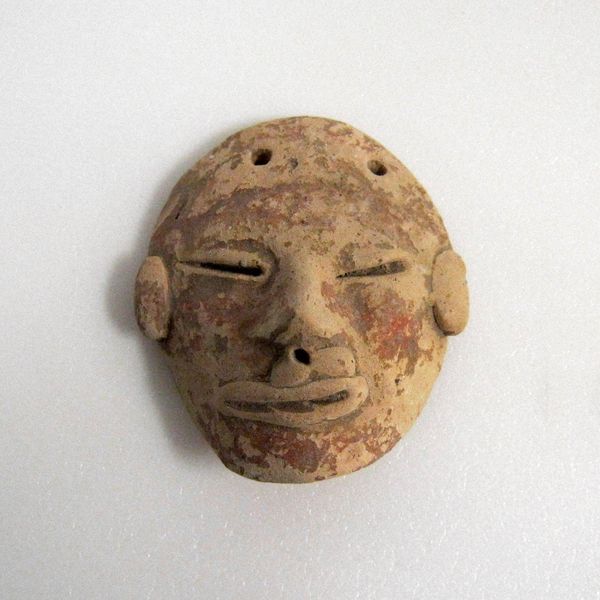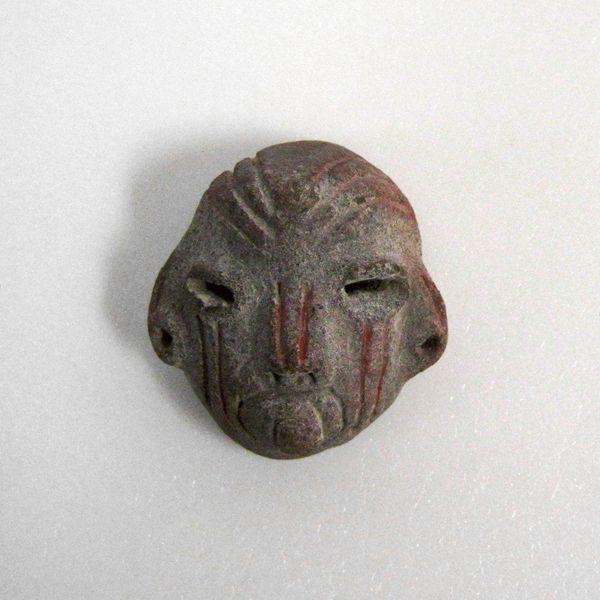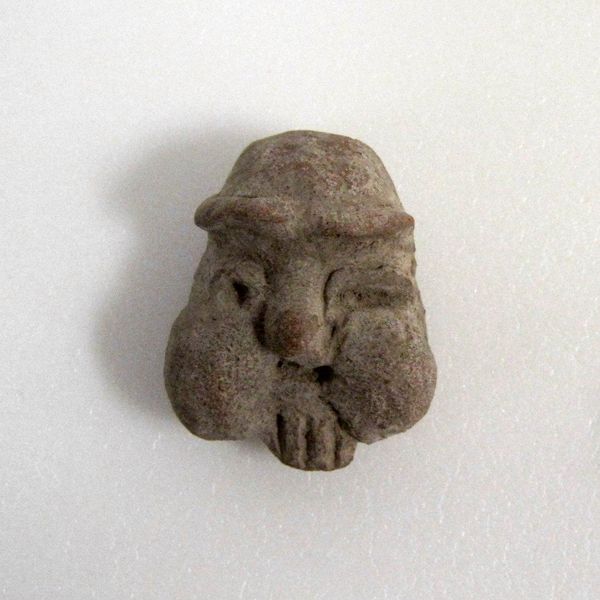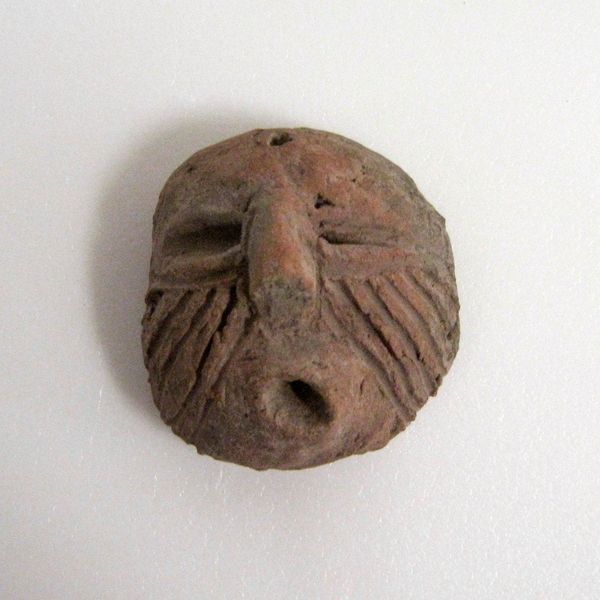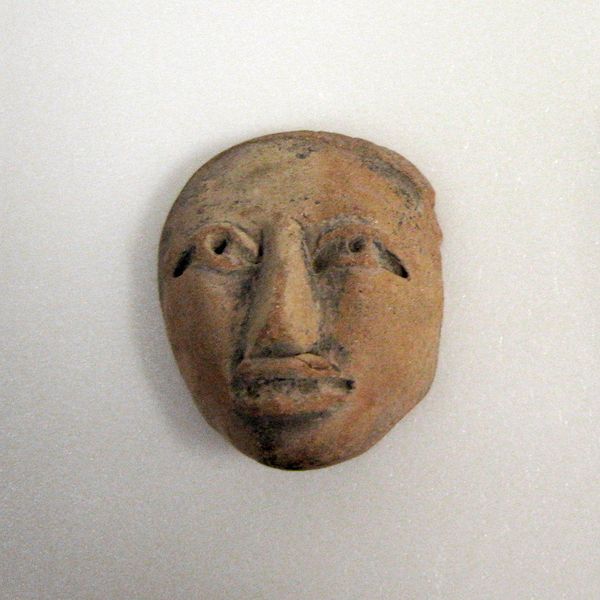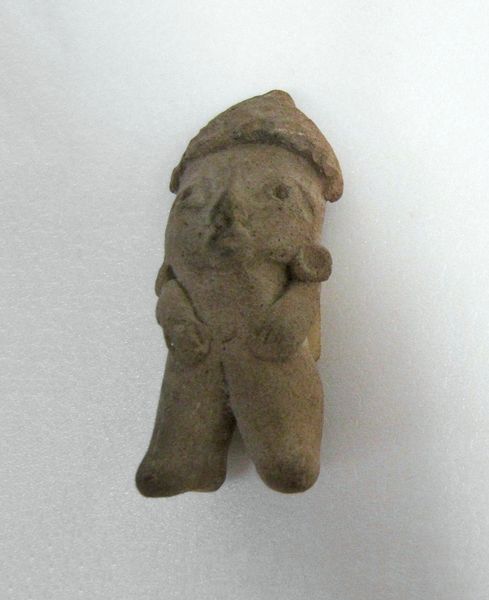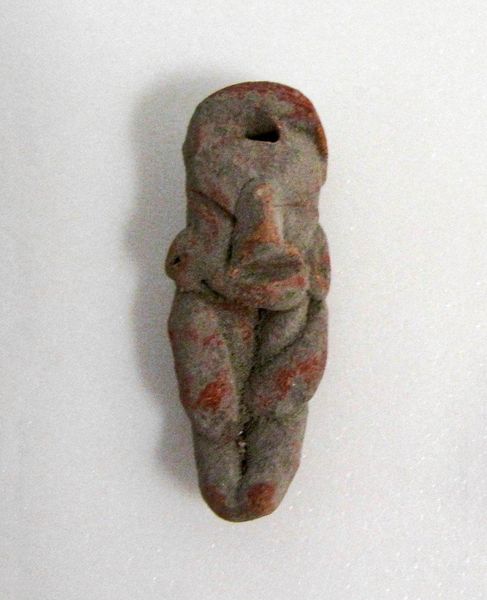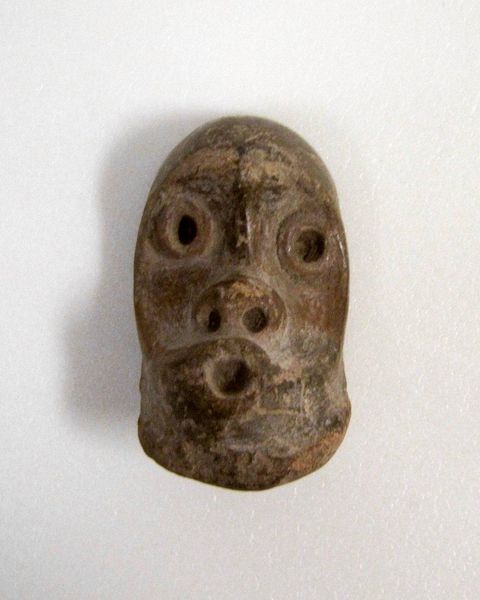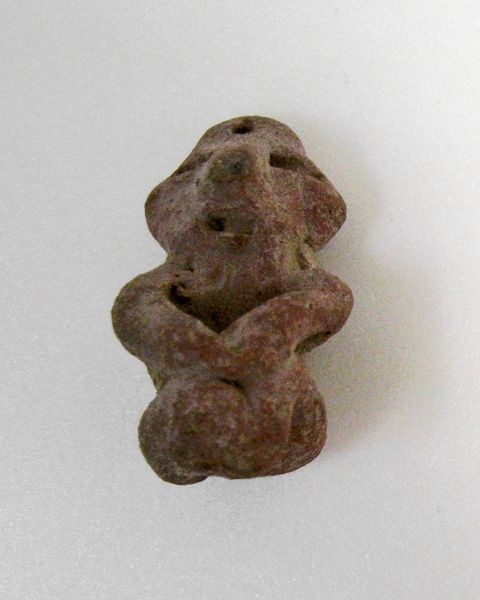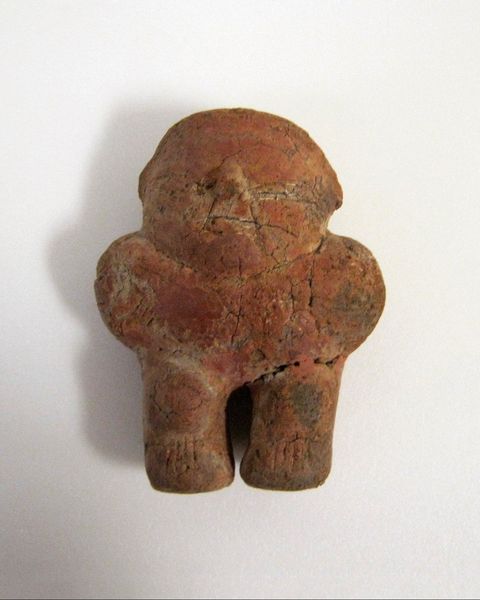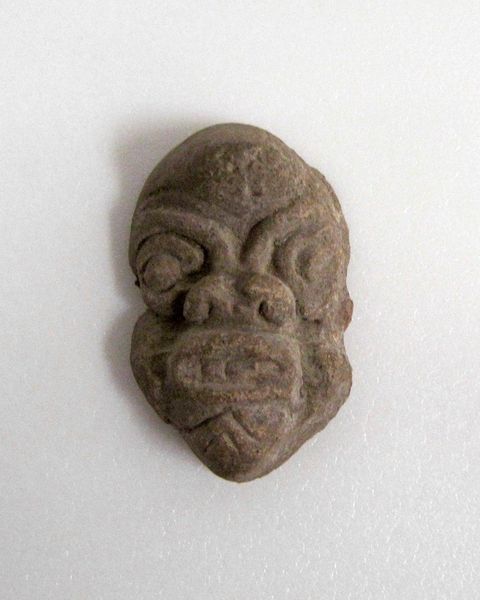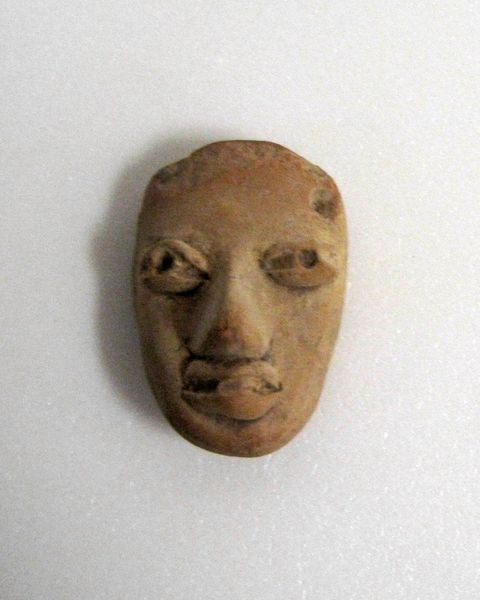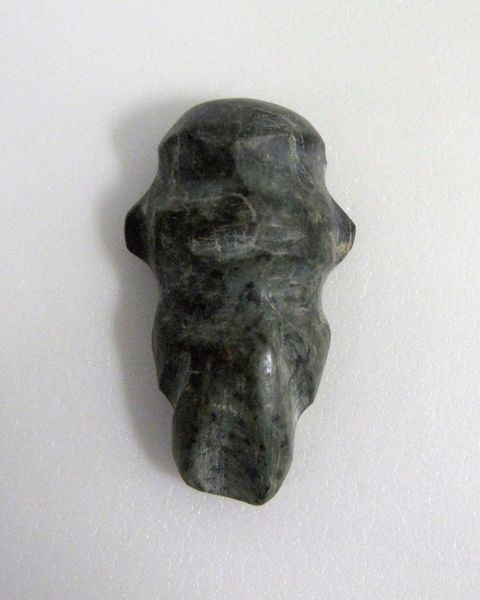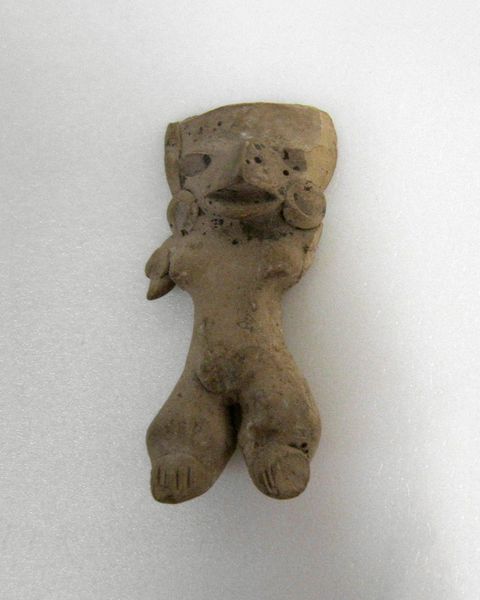
ceramic, earthenware, terracotta
#
ceramic
#
figuration
#
earthenware
#
terracotta
#
indigenous-americas
Dimensions: 3 1/4 x 3 1/4 in. (8.3 x 8.3 cm)
Copyright: Public Domain
Editor: Here we have a terracotta globular bowl, believed to be from the 2nd to 3rd century, crafted by the Chupícuaro people. The simplified facial features are striking, and something about the bowl gives off a serene feeling despite its age and the weathering it's clearly endured. What draws your eye in this work? Curator: The reduction of the face to just a few lines -- the slit eyes, the smooth planes of the cheeks -- acts as a powerful amplifier. The vessel, as a holder, becomes a face containing something, a mystery. What stories might it hold? Editor: So it's less about portraiture, and more about... symbolism? Curator: Precisely. Faces in indigenous American art often served as portals. They don't just represent an individual, but also connect us to ancestral knowledge, spiritual forces, even the cycles of nature. Do you notice how the features are both present, but also obscured? Editor: I do. The reddish pigment is faded, and parts of the face almost blend into the background. It feels incomplete somehow. Curator: The incompleteness invites us to participate. Consider the clay itself. Earth transformed into vessel. The vessel's "face" whispers of resilience. Doesn't the fading pigment evoke memory and transformation over centuries? Editor: Absolutely, now that you mention it. It's not just a bowl, it's a fragment of a culture, communicating something profound about continuity. Curator: Indeed, its very existence becomes a testament to cultural memory, challenging us to look deeper, to feel the weight of time, and to imagine the voices contained within. Editor: This makes me appreciate the piece on a much deeper level, understanding how an ancient object can transmit cultural meaning through the ages.
Comments
No comments
Be the first to comment and join the conversation on the ultimate creative platform.
